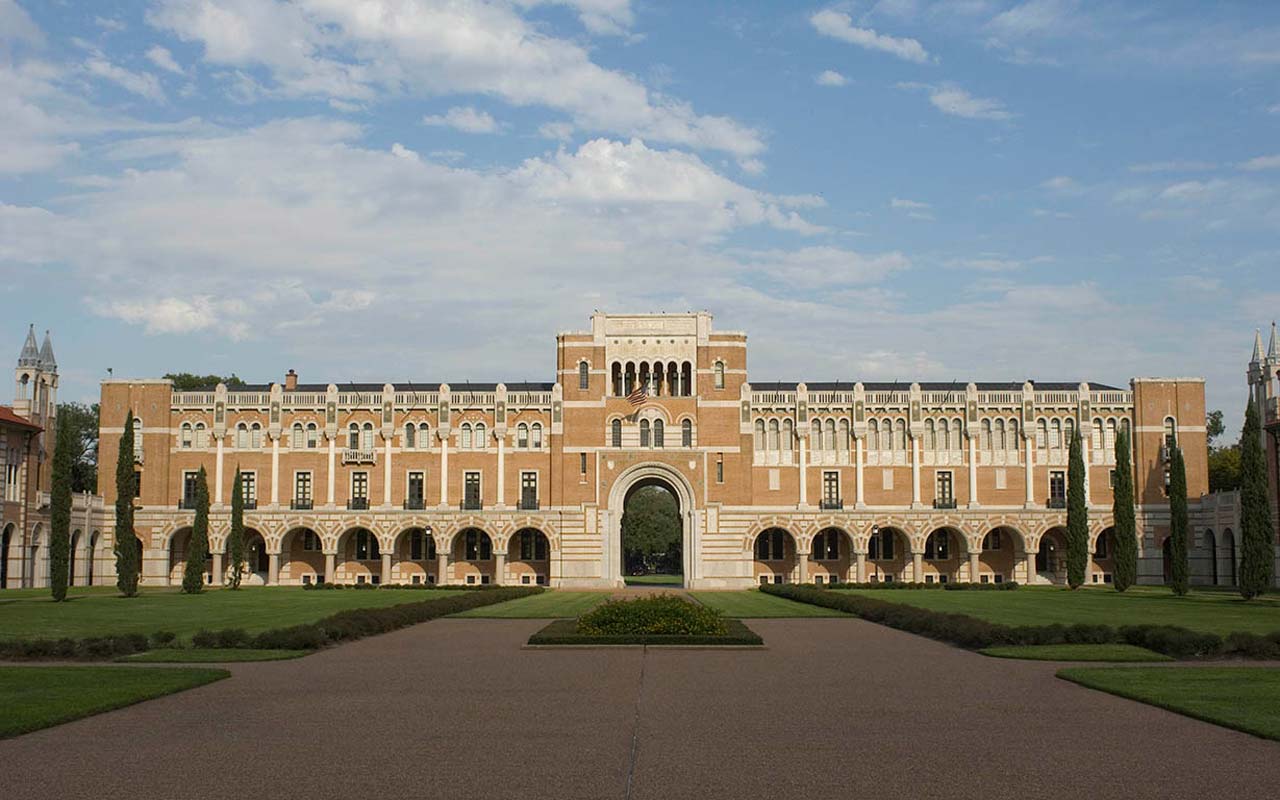10 Best Values in U.S. Colleges, 2018
Selecting a college and deciding how to pay for it has become a high-stakes financial decision.


Selecting a college and deciding how to pay for it has become a high-stakes financial decision. For the 2017-18 academic year, the average sticker price at private non-profit colleges, including tuition, fees and room and board rose 3.5% to $46,950, according to the College Board. And over the past 15 years, the average student loan debt for those who borrow has increased 29%, while the average earnings of recent college graduates—after adjusting for inflation—has remained relatively flat.
To help you sort through your options and find a school that fits your student's interest—and offers the best bang for your educational buck—we present our annual list of best value colleges and universities. These 10 schools top our combined list, which compares private universities, private liberal arts colleges and public colleges (using out-of-state costs) to help you compare your options side by side.
All the schools in our rankings meet our definition of value—a quality education at an affordable price. We start by examining academic measures, including how competitive admission to a school is and how efficiently it gets students to their degree. On the financial side, we look for schools with affordable sticker prices, generous financial aid for students who qualify, and low student debt at graduation. Private colleges, which typically have more magnanimous financial aid awards and stronger four-year graduation rates than their public counterparts, dominate the top of our combined list.
These 10 schools top our 2018 list for their ability to deliver a quality education at an affordable price.

1. Princeton University
- Location: Princeton, N.J.
- Undergraduate enrollment: 5,400
- Four-year grad rate: 89%
- Total annual cost: $61,140
- Avg. need-based aid: $47,497
- Avg. graduating debt: $8,908
- 10-year salary yardstick: $80,500
A blend of high-quality academics and abundant financial aid helps Princeton University move up two places this year to lead our 2018 combined best values list. This Ivy League institution racks up points for its highly selective 7% admission rate and strong test scores among incoming freshmen (73% score 700 or higher on the critical reading portion of the SAT and 81% score top marks on the math portion). It also tops our list of private universities for the fourth time in as many years.
Despite an annual sticker price of more than $61,000, a Princeton education can be surprisingly affordable. Nearly 60% of students—including some from families with an income of $250,000 a year or more—receive need-based financial aid, the only kind that Princeton offers. The average financial aid award for students who qualify cuts the school's sticker price to less than $14,000 a year. And at Princeton, loans aren't part of the financial aid equation. Since 2001, the school has awarded all financial aid in the form of scholarships and grants. The average debt among the roughly one in six students who do borrow is among the lowest of all 300 schools on our list.

2. Davidson College
- Location: Davidson, N.C.
- Undergraduate enrollment: 1,796
- Four-year grad rate: 90%
- Total annual cost: $64,903
- Avg. need-based aid: $41,998
- Avg. graduating debt: $20,431
- 10-year salary yardstick: $54,600
Located about 20 minutes north of Charlotte, Davidson College has climbed our rankings in recent years, nabbing the second spot on our 2018 combined list. This small liberal arts college also leads our list of private liberal arts colleges (ranked separately from private universities to account for their different missions) for the first time. A 90% four-year graduation rate helps solidify the school's spot on our list, as do the generous need-based aid awards that have helped keep the average cost that students and their families pay relatively flat. The school also stands out for what it doesn't do: saddle students with debt. In 2007, the school became the first liberal arts college to eliminate loans from financial aid packages. Among the roughly one-fourth of students who do borrow, the average debt is about $11,500 less than the national average for private school borrowers ($32,000).
Many of the school's roughly 2,000 students were attracted to Davidson for its broad-based liberal arts curriculum that allows students to select from more than 850 courses each year, with 26 academic majors ranging from chemistry to economics to religion. Many students also appreciate the way Davidson blends a classic liberal arts education with big-name athletics. Unlike most schools of its size, Davidson's Wildcats run with the big dogs, with 21 sports competing at the NCAA Division I level.

3. Swarthmore College
- Location: Swarthmore, Pa.
- Undergraduate enrollment: 1,620
- Four-year grad rate: 88%
- Total annual cost: $67,110
- Avg. need-based aid: $45,536
- Avg. graduating debt: $22,957
- 10-year salary yardstick: $52,500
Outstanding academics, including a 13% admission rate, an eight-to-one student-faculty ratio and an impressive 88% four-year graduation rate, help Swarthmore College excel in our rankings. This small liberal arts college with Quaker roots, located 11 miles southwest of Philadelphia, attracts exemplary students. More than 60% of incoming freshmen score 700 or higher on the critical-reading portion of the SAT and more than one-third of incoming students score top marks on the math portion. Once on campus, students can select from more than 500 courses in more than 40 areas of study or select additional courses through the school's agreement with nearby Bryn Mawr and Haverford Colleges (numbers 45 and 31 on our combined list, respectively) or the University of Pennsylvania (number 41). When they're not in class, Swatties can explore the school's 425-acre campus, which includes Scott Arboretum and Crum Creek, or hop a train from the station on the edge of campus for the 30-minute ride to Philly's Center City.
The smallest school in our top 10 offers a big value on the financial side, too. More than half of students qualify for need-based aid and the average need-based aid award cuts the school's sticker price to less than $22,000 a year. Like many of the schools near the top of our best value list, Swarthmore's financial aid packages keep loans off the table, instead awarding all aid in the form of scholarships and grants. Roughly one-third of students still borrow, but the average debt at graduation among those students is nearly $10,000 less than the national average ($32,000) for private school borrowers.

4. Harvard University
- Location: Cambridge, Mass.
- Undergraduate enrollment: 6,712
- Four-year grad rate: 86%
- Total annual cost: $66,609
- Avg. need-based aid: $48,598
- Avg. graduating debt: $16,702
- 10-year salary yardstick: $90,900
High-quality academics, including strong test scores among incoming freshmen and a slim 5% admission rate (among the most selective of all 300 schools in our rankings) help Harvard University move up two places this year to nab the fourth spot on our combined list. Of the students who are offered admission to this Ivy League institution, 79% of students enroll (the highest yield among the top 10 schools on our combined list).
An average need-based aid award of nearly $49,000 cuts the school's annual sticker price by 73%. And Harvard's definition of financial need may surprise you: For families earning $150,000 a year or less, the school generally expects you to contribute between 0% and 10% of family income. For those who earn more, the expected family contribution increases proportionately. And Harvard, like many of the schools near the top of our list, keeps loans out of the financial aid mix. The average debt among the roughly one in four students who do borrow is about half of the national average ($32,000) among borrowers who attend private colleges.

5. Duke University
- Location: Durham, N.C.
- Undergraduate enrollment: 6,609
- Four-year grad rate: 86%
- Total annual cost: $69,598
- Avg. need-based aid: $47,133
- Avg. graduating debt: $22,256
- 10-year salary yardstick: $77,900
After breaking into our combined top 10 last year, Duke University lands the fifth spot on our combined list for 2018. Despite sporting the highest sticker price on our combined top 10 list, Duke delivers a great value with financial aid awards that do an impressive job of cutting the nearly $70,000 sticker price down to size. Like all of the schools in our top 10, Duke meets 100% of students' demonstrated financial need, awarding need-based aid to more than 40% of students. The average award cuts the school's sticker price by 68% to $22,465. The school also offers non-need-based aid awards averaging $63,649 to roughly 5% of students who don't receive need-based aid.
The Blue Devils also rack up points for solid academics, including an 11% admission rate, high test scores among incoming freshmen, and a six-to-one student-faculty ratio. During their time on campus, roughly half of Duke undergraduates assist faculty with research. And 84% of graduates go on to pursue an advanced degree.

6. Pomona College
- Location: Claremont, Calif.
- Undergraduate enrollment: 1,660
- Four-year grad rate: 92%
- Total annual cost: $68,125
- Avg. need-based aid: $46,039
- Avg. graduating debt: $18,738
- 10-year salary yardstick: $56,600
Top-notch academics, including a competitive 9% acceptance rate and the highest four-year graduation rate of all 300 schools on our list, help Pomona College ascend six places on this year's combined best value list. Located on 140 acres about 35 miles east of Los Angeles, the school attracts exemplary students. Nearly two-thirds score above 700 on the critical reading portion of the SAT and 65% score top marks on the math portion) and the school's eight-to-one student-faculty ratio generally translates into small classes. Once on campus, students can select from 48 majors and 600 academic courses at Pomona, or—because Pomona is one of seven colleges and graduate schools in the Claremont College consortium—enroll in courses at nearby colleges including Claremont McKenna College (number 62 on our combined list), Harvey Mudd College (number 59), Pitzer College (number 53) or Scripps College (number 82).
Thanks to substantial need-based financial aid awards and the school's no loan policy, nearly two-thirds of students graduates without taking out student loans. Among the 36% who report borrowing, the average debt at graduation is about $13,000 less than the national average among private school borrowers. More than half of students qualify for need-based aid, and the average need-based aid award reduces the school's annual sticker price by 68%.

7. Vanderbilt University
- Location: Nashville, Tenn.
- Undergraduate enrollment: 6,871
- Four-year grad rate: 87%
- Total annual cost: $64,542
- Avg. need-based aid: $41,331
- Avg. graduating debt: $24,122
- 10-year salary yardstick: $64,500
Vanderbilt University, the largest school in our combined top 10, moves up one place this year with a competitive 11% admission rate, high test scores among incoming freshmen (91% score 30 or higher on the ACT) and an eight-to-one student faculty ratio. Once on campus, students can select from 69 majors ranging from biomedical engineering or child development to economics or musical arts and choose among more than 500 student clubs and organizations. Ninety-seven percent of freshmen return to Vanderbilt for their sophomore year.
Located a mile and a half southwest of downtown Nashville on a parklike campus with ancient oaks and magnolia trees, Vandy also wins points for its ample financial aid awards and no-loan policy. Nearly half of students receive need-based aid and the average award of more than $40,000 cuts the school's sticker price to about $23,000 a year for those who qualify. Roughly one in five students reports borrowing, but the average debt among those who do is about $8,000 less than the average among private school borrowers.

8. Rice University
- Location: Houston, Tex.
- Undergraduate enrollment: 3,893
- Four-year grad rate: 83%
- Total annual cost: $60,658
- Avg. need-based aid: $36,772
- Avg. graduating debt: $22,497
- 10-year salary yardstick: $64,300
Stronger test scores than in previous years and robust financial aid awards help Rice University return to the top 10 on our combined list this year. The school, located in the heart of the country's fourth-largest city, also stands out for its low six-to-one student-faculty ratio and 96% freshmen retention rate.
With the lowest sticker price in our combined top ten, the school is an attractive option for families regardless of how much aid they think they may qualify for. About 40% of students qualify for need-based aid and the average award cuts the school's sticker price more than 60% to $23,886 a year. Less than 30% of students report borrowing, and the average student debt among those who do is less than $23,000. Rice also awards non-need-based aid (also known as merit aid) to 17% of students who don't receive need-based aid.

9. Washington and Lee University
- Location: Lexington, Va.
- Undergraduate enrollment: 1,830
- Four-year grad rate: 88%
- Total annual cost: $63,880
- Avg. need-based aid: $42,292
- Avg. graduating debt: $26,397
- 10-year salary yardstick: $72,300
This small liberal arts college, located on a 55-acre main campus nestled between the Blue Ridge and Allegheny mountains in the historic town of Lexington, Va., is competitive. Washington and Lee accepts 24% of applicants and nearly 90% of incoming freshmen score 30 or higher on the ACT. Life on campus is governed by the school's honor code, which lets students proctor their own exams, and a "speaking tradition" that encourages students and faculty to greet everyone they pass on campus.
This 269-year-old-school, named for George Washington and Robert E. Lee, also racks up points on the financial side of the equation. More than 40% of students qualify for need-based aid and the average award—which excludes loans—brings the net price for those who qualify to less than $22,000. Students with good grades, strong test scores or other qualities the school is seeking may also qualify for merit aid. W&L awards non-need-based aid to 14% of students who don't qualify for need-based aid, with an average award of $34,766. Despite the school's no loan policy, one-third of students report borrowing. The average debt among those who do is about 20% lower than the national average for private school borrowers.

10. Wellesley College
- Location: Wellesley, Mass.
- Undergraduate enrollment: 2,347
- Four-year grad rate: 86%
- Total annual cost: $67,784
- Avg. need-based aid: $45,178
- Avg. graduating debt: $13,415
- 10-year salary yardstick: $60,100
This small women's college, located on 500 acres about 20 miles outside of Boston, maintains its place at number 10 on our combined best value list after breaking into the top 10 last year. Wellesley stands out for its competitive 30% admission rate, low seven-to-one student to faculty ratio, and 96% freshmen retention rate. Since it received a $50 million gift two years ago, Wellesley has been revamping its career services offerings with new mentorship programs, internships and public service opportunities as well as to make better use of the school's alumni, which has been called "the world's most powerful women's network."
Need-based aid awards, which are awarded to 60% of students, help keep a Wellesley education affordable. The school's financial aid policies eliminate or reduce loans for some students, but keep the total loan amount to no more than $15,200 over four years for all students. The average debt among the roughly half of Wellesley students who report borrowing is nearly $19,000 less than the national average among private school borrowers.
Profit and prosper with the best of Kiplinger's advice on investing, taxes, retirement, personal finance and much more. Delivered daily. Enter your email in the box and click Sign Me Up.

-
 Your Guide to Buying Art Online
Your Guide to Buying Art OnlineFrom virtual galleries to social media platforms, the internet offers plenty of places to shop for paintings, sculptures and other artwork without breaking the bank.
-
 Samsung Galaxy S25 Ultra for $4.99 a Month: A Closer Look at Verizon’s Deal
Samsung Galaxy S25 Ultra for $4.99 a Month: A Closer Look at Verizon’s DealVerizon’s aggressive pricing makes Samsung’s top-tier phone tempting, but the real cost depends on your plan and how long you stay.
-
 I'm 59 with $1.7 million saved and lost my job. Should I retire?
I'm 59 with $1.7 million saved and lost my job. Should I retire?We asked professional wealth planners for advice.
-
 What to Do With Your Tax Refund: 6 Ways to Bring Growth
What to Do With Your Tax Refund: 6 Ways to Bring GrowthUse your 2024 tax refund to boost short-term or long-term financial goals by putting it in one of these six places.
-
 What Does Medicare Not Cover? Eight Things You Should Know
What Does Medicare Not Cover? Eight Things You Should KnowMedicare Part A and Part B leave gaps in your healthcare coverage. But Medicare Advantage has problems, too.
-
 15 Reasons You'll Regret an RV in Retirement
15 Reasons You'll Regret an RV in RetirementMaking Your Money Last Here's why you might regret an RV in retirement. RV-savvy retirees talk about the downsides of spending retirement in a motorhome, travel trailer, fifth wheel, or other recreational vehicle.
-
 The Six Best Places to Retire in New England
The Six Best Places to Retire in New Englandplaces to live Thinking about a move to New England for retirement? Here are the best places to land for quality of life, affordability and other criteria.
-
 The 10 Cheapest Countries to Visit
The 10 Cheapest Countries to VisitWe find the 10 cheapest countries to visit around the world. Forget inflation and set your sights on your next vacation.
-
 15 Ways to Prepare Your Home for Winter
15 Ways to Prepare Your Home for Winterhome There are many ways to prepare your home for winter, which will help keep you safe and warm and save on housing and utility costs.
-
 Six Steps to Get Lower Car Insurance Rates
Six Steps to Get Lower Car Insurance Ratesinsurance Shopping around for auto insurance may not be your idea of fun, but comparing prices for a new policy every few years — or even more often — can pay off big.
-
 How to Increase Credit Scores — Fast
How to Increase Credit Scores — FastHow to increase credit scores quickly, starting with paying down your credit card debt.
